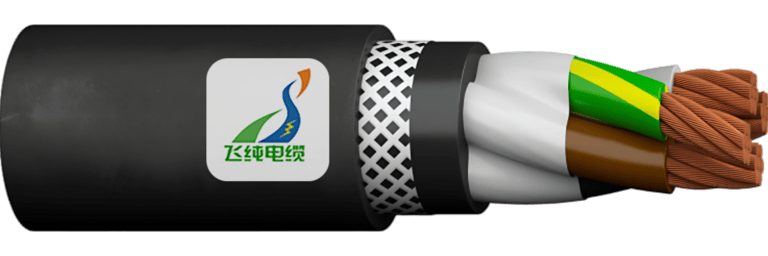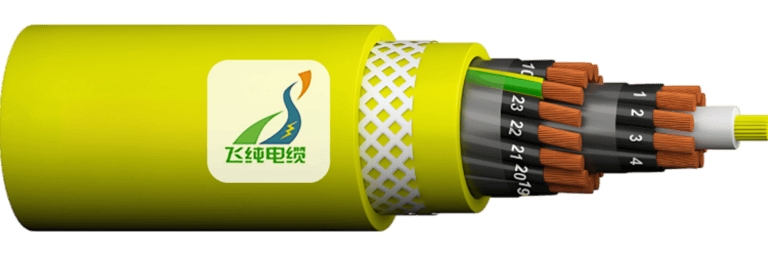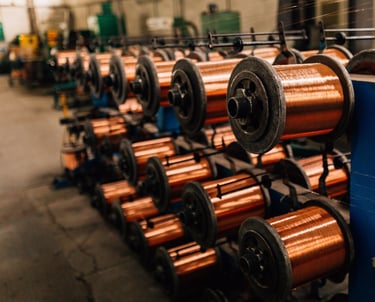How to Prevent Pest Attacks on Cables in Australia: A Practical Guide
Pest damage to electrical, data and appliance cables is an all-too-common headache for Australian households and businesses—chewed wires can cause power outages, data loss, fire risks and expensive repairs. This article explains why pests (from rodents to possums and termites) target cables, outlines the consequences of cable damage, and presents a suite of preventative measures—from simple home-maintenance tips to specialist protective products and professional strategies—helping Aussie readers safeguard their installations year-round.
5/14/202510 min read
How to Prevent Pest Attacks on Cables in Australia: A Practical Guide
1. Introduction
1.1. The hidden cost of chewed cables: safety, downtime and repair bills
When we think of pest problems, we typically imagine spoiled food, structural damage, or unwelcome droppings. However, one of the most insidious and potentially dangerous forms of pest damage often goes unnoticed until it's too late—gnawed and compromised electrical and data cables. In Australia, repairs for pest-damaged wiring can run into thousands of dollars, not counting the associated costs of business downtime, data loss, or worse, fire damage from electrical shorts.
1.2. Why Australia's unique fauna and climate make cable chewing a special concern
Australia's diverse ecosystem and climate create perfect conditions for cable-chewing pests. Our warm weather supports year-round rodent breeding cycles, while native species like possums have adapted to urban environments and found comfortable homes in roof spaces. Meanwhile, Australia hosts some of the world's most voracious termites, which can silently destroy cable insulation alongside structural timber. The combination of these factors makes our continent particularly vulnerable to cable damage compared to many other regions.
1.3. Overview of what the article will cover
This comprehensive guide will identify the main culprits behind cable damage in Australian settings, explain what motivates these pests to target wiring, outline the serious consequences of ignored cable damage, and most importantly, provide practical preventative measures for both homeowners and businesses. We'll also share real-world success stories and provide guidance on choosing the right protective products and services for your specific situation.


2. Which Pests Target Cables in Australia?
2.1. Rodents: rats and house mice
Rats (particularly the Black Rat and Brown Rat) and house mice are among the most common cable destroyers across Australia. These rodents can squeeze through remarkably small openings—mice need only a gap the width of a pencil—giving them access to wall cavities, ceiling spaces, and cable ducts throughout buildings. Their constantly growing incisor teeth drive them to gnaw on hard materials, making PVC cable insulation an irresistible target.
2.2. Possums and gliders
Brushtail and ringtail possums, along with sugar gliders in some regions, have adapted remarkably well to urban environments. These native marsupials frequently take up residence in roof spaces where electrical wiring is abundant. Unlike rodents, possums tend to damage cables incidentally while establishing nesting sites or through repeated movement across wiring routes, gradually wearing away protective sheaths.
2.3. Termites and cockroaches
While termites primarily consume cellulose materials, they will readily chew through plastic cable insulation that stands between them and a timber food source. Subterranean termites can enter buildings through tiny foundation cracks, while drywood termites might establish colonies directly in wooden structural elements near cabling. Cockroaches, particularly the larger Australian species, don't typically damage cables through chewing but can deposit corrosive waste that degrades insulation over time.
2.4. Birds and bats (in outdoor/roof spaces)
Certain bird species, including cockatoos with their powerful beaks, have been known to damage outdoor cabling and sometimes even aerial fiber optic lines. In roof spaces, both birds and microbats can damage insulation through nesting activities or by introducing moisture from droppings that accelerates the degradation of cable sheaths.
3. Why Do Pests Chew or Nest in Cables?
3.1. Nutritional and nesting motivations
Contrary to popular belief, rodents don't chew cables for nutritional value. Rather, their incisors grow continuously throughout their lives, necessitating constant gnawing to wear them down to manageable lengths. Cables provide convenient gnawing material. Additionally, shredded cable insulation makes excellent nesting material for both rodents and possums, who incorporate it into their comfortable hideaways alongside other scavenged materials.
3.2. Warmth, shelter and vibration cues in wiring ducts
Electrical cables, especially those carrying significant current, emit low levels of heat that attract pests seeking warmth during cooler months. Cable ducts and conduits offer protected pathways throughout structures, essentially creating pest highways. The subtle vibrations and electromagnetic fields generated by active cables may also attract certain pests, possibly being misinterpreted as signals of insect activity or water sources.
3.3. Seasonal and environmental triggers
Pest pressure on cabling intensifies during certain periods. Autumn brings increased rodent intrusions as creatures seek winter shelter, while summer storms can drive possums to establish more permanent indoor residences. Extended dry periods force many pests to seek moisture sources, sometimes finding it in condensation that forms on air-conditioned ducting that runs alongside cabling.
4.1. Electrical hazards: short-circuits and fire risk
Perhaps the most serious consequence of pest-damaged cables is the increased fire risk. When rodents gnaw through cable insulation, they often expose multiple conductors, creating potential for short circuits and electrical arcs that can ignite surrounding materials. According to Fire and Rescue NSW, approximately 40% of residential fires have electrical origins, with pest damage being a significant contributor to this statistic.
4.2. Data loss and communication downtime
In our connected world, damaged data cables can cause disruption far beyond the physical damage itself. For businesses, compromised network infrastructure can lead to data loss, missed transactions, and customer service failures. Even in residential settings, damaged cables can interrupt remote work, online education, and essential digital services. Unlike power cables, data cable damage might not present immediate symptoms but can cause intermittent failures that are challenging to diagnose.
4.3. Insurance, warranty and compliance issues
Many insurance policies contain exclusions or limitations for pest damage, particularly if it's deemed to result from inadequate maintenance or pest management. Similarly, warranties for electrical appliances and systems typically don't cover damage from pests. More seriously, electrical installations compromised by pest damage may no longer comply with Australian Standards, potentially invalidating building certifications and creating liability issues for property owners.
4.4. Long-term structural or appliance damage
Beyond the immediate cable damage, pest intrusions often lead to collateral damage in surrounding building elements. Moisture introduced by pests can accelerate corrosion in electrical components, while their nesting materials can block ventilation required for equipment cooling. Sophisticated electronic devices connected to compromised cables may suffer component damage from power fluctuations or short circuits, sometimes failing completely even after the cable issue is repaired.


4. The Impacts of Pest-Damaged Cabling




5. Preventative Strategies for Homeowners
5.1. Regular inspection and early detection (what to look for)
Establishing a quarterly inspection routine can catch pest problems before they cause significant damage. Key warning signs include:
Unexplained circuit breaker trips or RCD activations
Intermittent connectivity issues with internet or home networks
Unusual odors near electrical installations (often indicating burning insulation)
Visual evidence such as droppings, gnaw marks on plastic conduits, or disturbed insulation
Strange noises in walls or ceiling spaces, particularly at night
Focus inspections on areas where cables enter the building, junction boxes, and places where wiring runs through timber structural elements.
5.2. Sealing entry points: gaps, vents and service penetrations
Preventing pest access is fundamental to protecting cables. Key measures include:
Sealing any gaps larger than 6mm with appropriate materials (steel wool embedded in sealant works well for deterring rodents)
Installing proper vermin-proof mesh (with apertures smaller than 6mm) over vents, weep holes, and other necessary openings
Ensuring service penetrations through walls and floors are properly sealed with fire-rated caulking or collars
Repairing damaged roof tiles, fascia boards, and eaves that might provide entry points
Addressing foundation cracks that could admit termites or smaller rodents
5.3. Installing physical barriers: conduit, trunking and mesh guards
Physical barriers provide an additional layer of protection for vulnerable cabling:
Replacing plastic cable conduits with metal alternatives in high-risk areas
Installing split-loom tubing over existing exposed cables
Using cable trunking systems with secure fastenings that resist pest manipulation
Applying metal mesh guards around cables where they pass through timber elements
Considering stainless steel braided conduit for critical outdoor installations
5.4. Use of repellents and deterrent devices (ultrasonic, taste-aversion coatings)
Several deterrent options complement physical barriers:
Ultrasonic pest repellers can be effective in enclosed spaces, though their effectiveness varies by pest species
Cable coatings containing bittering agents or capsaicin derivatives discourage chewing
Natural repellents like peppermint oil can deter mice when regularly applied near cable runs
Electronic deterrents that create changing electromagnetic fields show promise in discouraging rodents from established pathways
5.5. Good housekeeping: yard maintenance and clutter reduction
Good environmental management reduces pest pressure on buildings and their contained wiring:
Maintaining a clear perimeter around buildings, keeping vegetation trimmed back at least 30cm
Eliminating wood piles, disused materials and other potential harborage within 3m of structures
Ensuring proper drainage to prevent damp conditions attractive to many pests
Managing fruit trees and bird feeders to avoid creating food sources near buildings
Reducing clutter in storage areas, particularly cardboard and paper items that attract nesting pests


6.1. Heavy-duty cable armouring and conduit systems
Commercial and industrial settings often require industrial-strength protection:
Galvanized or stainless steel armoured conduit systems resistant to even determined rodent attack
Liquid-tight flexible metal conduits for applications requiring movement or flexibility
Crush-resistant composite conduits incorporating glass fiber and metal elements
Purpose-designed underground cable protection systems with physical barriers and chemical deterrents
Rated fire-sleeve protection that simultaneously guards against pest damage and increases fire resistance


6. Specialist Solutions for Businesses and Critical Infrastructure
6.2. Pest-resistant cable specifications (e.g. armoured, sheathed cables)
For new installations or major renovations, specifying pest-resistant cabling from the outset is cost-effective:
SWA (Steel Wire Armoured) cables provide excellent protection against mechanical damage and pest attack
Metal-braided sheathing options for data and communication cables
LSZH (Low Smoke Zero Halogen) cables with enhanced rodent-resistant additives
Solar installation-specific cables with reinforced protective layers designed for Australian conditions
Underground-rated cables with additional protective layers against both moisture and burrowing pests
6.3. Scheduled professional inspections and pest control contracts
Consistent professional oversight provides peace of mind for business operations:
Quarterly electrical thermal imaging inspections to identify hotspots potentially indicating damaged wiring
Integrated pest management contracts with specific provisions for cable protection
Annual comprehensive electrical system inspections by licensed electricians familiar with pest damage patterns
Specialist termite inspection and monitoring focused on areas where cabling intersects with structural timber
Documentation and certification of inspections for insurance and compliance purposes
6.4. Integrating cable protection with building management systems
Modern building technology offers sophisticated protection opportunities:
Microphone-based monitoring systems capable of detecting rodent activity within walls and ceiling spaces
Heat and movement sensors in critical cable spaces integrated with building management alerts
Scheduled automated testing of cable integrity through impedance measurement systems
CCTV monitoring of key cable entry points and distribution frames
Remote monitoring solutions allowing off-hours alerting for critical infrastructure
7. Case Studies and Local Examples
7.1. Suburban Sydney home saved by replacing PVC conduits with steel trunking
The Henderson family in Western Sydney experienced repeated power outages despite multiple electrician visits. Investigation revealed that black rats had established a nest in their ceiling space and had gnawed through PVC conduits protecting electrical wiring, causing intermittent short circuits. After replacing all accessible ceiling cabling with steel-enclosed trunking systems, sealing roof entry points, and implementing a comprehensive pest control program, the family has experienced no further electrical issues in over three years. The $3,200 investment potentially saved tens of thousands in potential fire damage.
7.2. Regional Queensland data centre's termite-proofing upgrade
A mid-sized data centre in Townsville suffered catastrophic downtime when termites damaged both power and fiber optic cabling running through a raised timber floor system. The facility's subsequent $85,000 upgrade included replacing timber elements with steel, installing termite-resistant cable conduits, implementing a comprehensive termite barrier system, and deploying moisture sensors to detect conditions favorable to termite activity. Since implementation, the facility has maintained 99.99% uptime while neighboring properties continue to battle termite pressure.
7.3. Melbourne café's cost-effective mouse-repellent wiring retrofit
After discovering mouse damage to point-of-sale system wiring that caused three days of trading disruption, a popular Melbourne café implemented an affordable protection strategy. This included installing split-loom tubing over existing cables, sealing all wall penetrations with expanding foam and steel wool, deploying ultrasonic repellers in wall cavities during a minor renovation, and instituting a strict daily cleaning protocol for food debris. The café owner estimates the $950 spent on prevention saved over $15,000 in potential lost business and equipment damage.


8. Choosing the Right Products and Services
8.1. How to read labels: compliance marks and warranty info
When selecting cable protection products, look for:
RCM (Regulatory Compliance Mark) indicating the product meets Australian electrical safety standards
IP (Ingress Protection) ratings for outdoor applications—minimum IP65 for Australian conditions
UV resistance certifications for products used in exposed installations
Warranty periods specific to pest resistance, not just general product failure
Australian Standard compliance markers, particularly AS/NZS 3000 for electrical installations
Specific mentions of resistance to Australian pest species in product documentation
8.2. Recommended Australian suppliers and pest-control professionals
Resources for finding qualified assistance include:
Master Electricians Australia maintains a database of qualified electricians with specialist experience in pest damage remediation
The Australian Environmental Pest Managers Association can connect property owners with licensed pest controllers who understand electrical system protection
Major electrical wholesalers like Middys and Lawrence & Hanson have specialist technical advisors for cable protection applications
The Housing Industry Association provides referrals to builders specializing in pest-resistant construction techniques
State-specific building authority websites publish lists of licensed professionals qualified for complex electrical and pest management work
8.3. Budgeting and cost-benefit considerations
When planning cable protection investments:
Prioritize protecting mission-critical systems first if working with budget constraints
Consider the "hierarchy of protection"—sealing entry points provides the best return on investment
Factor in potential business downtime costs when calculating appropriate spending levels
Look for integrated solutions that address multiple issues simultaneously (e.g., fire protection and pest resistance)
Remember that insurance excesses and premium increases after claims often exceed prevention costs
Calculate lifecycle costs rather than just initial installation—quality pest-resistant materials typically offer lower total ownership costs despite higher upfront prices
9. Conclusion and Next Steps
9.1. Recap of key preventative points
Protecting your electrical and data cables from Australia's determined pests requires a multi-layered approach. Starting with basic housekeeping and entry point sealing provides a strong foundation. Physical barriers like appropriate conduits and cable specifications add another critical layer of defense. For complete protection, especially in high-risk areas, consider adding deterrent technologies and professional monitoring. Remember that prevention is invariably less expensive and disruptive than repairing damage after it occurs.
9.2. Quick "Pest-Proof Cable Checklist" for DIY readers
☐ Inspect and seal all external entry points larger than 6mm
☐ Install mesh guards over vents and necessary building openings
☐ Replace plastic cable conduits with metal alternatives in high-risk areas
☐ Apply protective split-loom tubing to exposed cable runs
☐ Clear vegetation and debris from building perimeter
☐ Install ultrasonic deterrents in enclosed spaces with cable concentrations
☐ Implement quarterly inspection routines of all accessible cabling
☐ Document your protection measures for insurance purposes
☐ Test RCDs and circuit breakers monthly to ensure functionality
☐ Maintain a relationship with qualified pest control and electrical professionals
9.3. When to call in the experts
While many preventative measures can be implemented by property owners, certain situations demand professional intervention:
If you discover damaged electrical cabling, contact a licensed electrician immediately—don't attempt repairs yourself
When planning new construction or major renovations, consult with specialists in pest-resistant designs before work begins
If you detect signs of extensive pest infestation, professional pest controllers can implement comprehensive management programs
For critical infrastructure or business settings, consider commissioning a formal risk assessment from qualified electrical engineers
If you experience repeated pest incursions despite DIY prevention efforts, building structural issues might require professional assessment
By implementing these preventative strategies, Australian property owners can avoid the considerable expense, inconvenience, and danger that pest-damaged cables present. Start with simple measures today, gradually building a comprehensive protection system that keeps your electrical and data systems safe from our uniquely challenging pest population.


